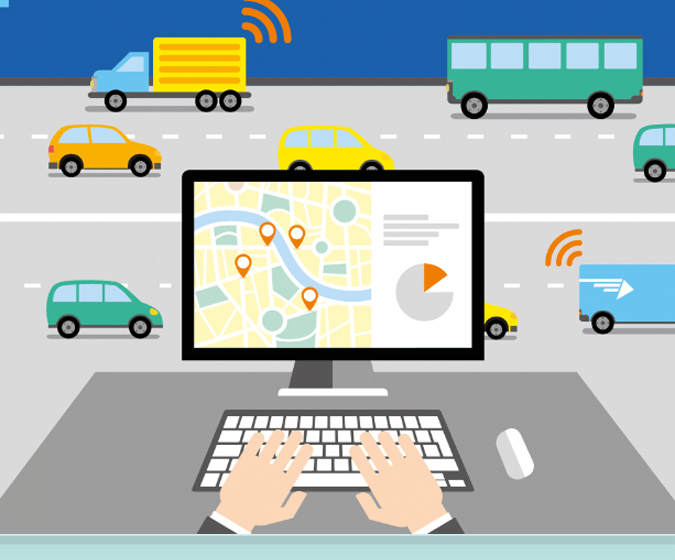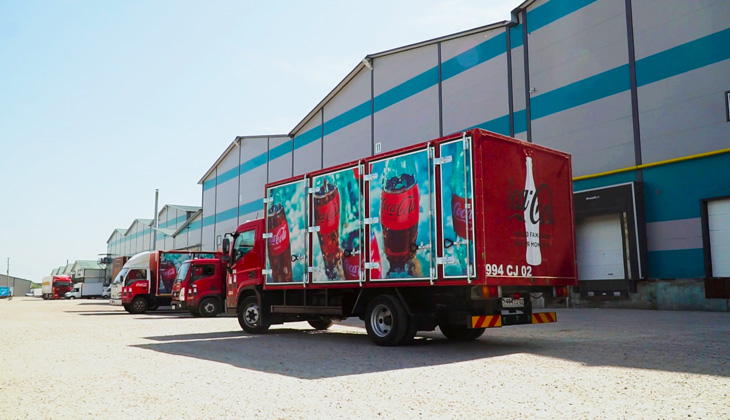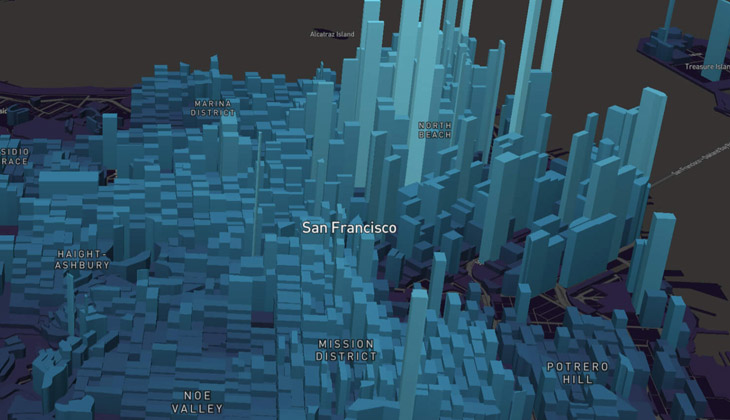Today, logistics is facing many challenges, ranging from the annoying coronavirus to the general economic recession due to the oil crisis. As a rule, during such periods the weak leave the market, and the strong become even stronger. And in such a difficult time some of them decide to establish delivery, which they actually never had.
Trends of the year
The well-known PwC company, at the end of last year, outlined 5 trends in the world of logistics for 2020. Two of them are devoted to digitalization and changes in processes in connection with the introduction of new software. At the same time, Microsoft in cooperation with PFSK has shared the trends for the current year in their Playbook 2020. And the key trend, as you probably guessed, sounds like this - "Companies with fully IT integrated warehouses and routing of intra-city transport are ahead of competitors by 20%." A significant figure, isn't it? And so, you have a task - to solve the issue with routing in order to predetermine a number of logistic problems.
What is route planning software?
Let's simulate the situation - we need to solve the above problem. Most likely you have heard somewhere that routing tasks are solved by route planning softwares. The first thing that most likely comes to your mind is to google something like "a program for building routes" or "a program for delivery". And google gives you a list of such software developers sites. You are faced with a difficult choice. The problem is that you are not very well versed in the parameters and functions that will bring you the maximum benefit. Right? Then let's figure it out!
First, a little boring theory. According to the Business Dictionary website, route planning is about computing the most cost-effective route involving several nodes or stopovers by minimizing the distance traveled and/or time taken. This is a bit of a technical definition. To put in a simpler way: The term route planning means to create driving directions or routes for multiple locations in the most efficient way. Thus, a route planning software helps to optimally deliver products from the warehouse to the end supplier or point of sale on a pre-planned route, taking into account the cargo and other parameters.
Do not confuse ERP with route planning
Most are trying to shift the tasks that route planning should solve to the accounting system. This solution is ineffective. Consider the diagram below.
Here we see that, using the ERP system or 1C, we see the route of sales representatives along which the drivers go the next day. The ineffectiveness of this approach is that today the sales representative formed 40 deliveries for the driver, and tomorrow it turned out only 10. In this situation, the driver has to leave the trip half empty. Or, the fleet dispatcher will have to manually reorganize orders, thereby avoiding the automation of the delivery process. And with this approach, you will lose a lot of money. Instead it would be smarter to solve this by dividing the delivery process into three stages:
1) Receiving an order
2) Storage, accounting and assembly (ERP, 1C)
3) Routing, delivery, analytics (Route planning software)
The problems we face when choosing a route planning software
Typically, most logistics professionals face two challenges when choosing delivery optimization software:
- Product selection, functionality
- Integration, maintenance
Answering the identified problems, I would like to highlight the most important thing - this is functionality. Functionality that solves your tasks. Perhaps you have b2c delivery or you are a trading company and deliver FMCG to retail outlets. Maybe your client needs to see how a driver is coming to him with an order, or it may be necessary to distribute 600 orders among 30 drivers correctly. The software should solve tasks suitable for your delivery format. The second is integration. You must give an assessment to the company that provides you with the service. How well integration of the route planning software goes in your accounting system? Is the modeling of processes and, ultimately, high-quality support after the launch of the program is done? How quickly does the customer service of the software developers respond and help?
Components of the program
A modern route planning software should include at least four main modules:
1) Dispatch interface - a module in which a route is planned according to the specified dispatcher parameters.
2) Mobile app. for drivers - a service through which drivers are tracked, as well as the function of navigation and work with requests.
3) Analytics service - a module that allows you to assess the delivery level by using heat maps, rejections rate and tracking the drivers with most of rejections.
4) Service for customers - order tracking, the ability to receive feedback from the recipient of the order.
Types of programs
Today we distinguish two types of programs - cloud and box. It is worth noting, that the market is mostly represented by cloud services operating on the SaaS model (by subscription). For the end consumer that is for you, the cloud service will certainly be more budgetary. The box solution is suitable for companies that require typical tasks such as special route planning, etc. Basically "Boxes" are focused on large Enterprise companies with specific tasks. They are usually developed according to an individual order with precise technical features. Unlike the cloud, they are stored on the client's own servers.
Update
When looking for a program, you should pay attention to how often it is updated. First of all, regular updates are an indicator of a strong development team which systematically improves its product, constantly adds new features, removes less popular solutions and simply fixes bugs. Most often, companies advertise updates on their social networks, websites or via e-mail.
Routing
Building delivery routes is one of the main features of any route planning software program. But the nuances lie in the details. Does the algorithm of the system allow distributing them only on a linear basis, or is it possible to build a route radially? For example, two companies have different types of delivery. In the case of linear route construction, it is assumed that the final point of driver’s delivery will not be near the warehouse or base, but so that it would be convenient for the driver to go home. With radial, the last point should be on the path of the driver's return to the warehouse. Some route planning software programs may not provide a choice of routing method.
How do maps work?
As a rule, software programs work on the maps basis like google. But, sometimes some of them use their own maps which are significantly limited and are developed on the basis of reference information. Their renewal costs mean additional costs, and the information content is of low quality. Jams statistics on own maps are not taken into account and affects the incorrect route building, which leads to delays or even goods delivery failure.
Distribution by geo-zones
An additional convenient parameter, expressed by the ability of the algorithm to divide the city into zones or sectors, for drivers’ delivery in certain areas. This is one of the most common features in route planning software programs.
Weight and dimension characteristics
We have already mentioned the importance of accounting and routing. But without taking into account the weight and size characteristics, in fact, it is problematic to integrate correct delivery. If we do not know the characteristics of the goods and their dimensions, whether the goods fit into the truck, we will face a problem when one truck will be loaded fully and the other one only by half. The qualitative route planning software should have both: an account of the cargo weight and the body volume.
Temporary gaps
It's no secret that the one who provides a better service often wins the competition. It happens so that for one customer It is needed to deliver goods at 8:30 and for another one only before lunch or after lunch. Given these trends, customer expectations have shifted. They expect faster shipments. They expect more flexibility. They also want more transparency, and they expect lower prices. These are significant challenges, of course, for any business. How to do it? The route planning software algorithm must build a route in such a way that all time intervals for delivery are taken into account. Otherwise, you will have to generate routes manually and it means avoiding automation as well as increasing labor costs.
Fuel consumption accounting
Surely, it will not be new for you that accounting for fuel consumption is one of the key factors in optimizing logistics costs.
Usability
By Usability, we mean the simple, native and intuitive dashboard. The fleet dispatcher should be comfortable using the new program, otherwise the employee will start sabotaging the work or refuse to use the software. Let's just compare the two pictures, which dashboard is more understandable and pleasant for you? I’m sure it’s the first one!
Mobile app.
We have already said that the mobile app for the driver is his work tool that helps him to work efficiently. Such a service should be convenient. Pop-up tips are important if the driver has forgotten an option. For example, how much change he has to pick up or how many orders he has to fulfill today. It is important that the app. has a navigation system, a customer feedback form and other important features. At the same time, the fleet dispatcher in the office, thanks to the app, can see when the driver left, where he is now, whether he was late or arrived on time, whether he deviated from the route built by the automation. Or maybe he turned off mobile data so that he was not visible to you and this one also needs to be tracked.
Customer service
This module allows us to show the client at what delivery stage his goods are at the moment. Perhaps the driver was late, then the client can leave an appropriate review. Or the order did not come in a salable condition. You will know if a bad delivery has just happened, so you can contact the customer, apologize and offer a bonus option. Customer satisfaction will lead to a positive experience, which in turn leads to customer retention. Obviously, consumers would continue with the same service if they had a positive delivery experience. In addition, this feature allows you to save a lot on calls to customers and automate the feedback system.
Analytics
Analytics must include a full analysis of drivers and fleet dispatchers work carried out during the day. Analytics is a tool that gives you a picture of trends. You will be able to geographically see the frequency of deliveries in a particular area. You will be able to understand in which area of the city there are few deliveries, and where there are many. Where products are ordered more often, and where not. Perhaps in some distant area the drivers are systematically late, or a particular driver is ineffective compared to others.
Plan – fact analysis
Quite convenient feature related to analytics, where you can clearly see on the map how the routes offered for the driver by the system and track his trip. Where the driver deviated from the route indicated to him. Often the drivers take a nap during the work day or spend a lot of time for other purposes besides their work. The fleet dispatcher will see these violations and can take actions against such drivers.
Demo access
I wouldn't be surprised if the service providers tell you that their software program is the best, and you don't even need to look at others. They promise a bunch of features, but how do they actually work? Such things need to be checked in details. Services that are not afraid to give free use of their software should be worthy of your attention. But, you should automatically refuse those who do not provide trial use. It often happens that the "service provider" will ask you to conclude a demo use agreement or ask for integration with your accounting system for a demo. In such cases be careful and do not trust.
Pricing
Now we have come to a very interesting and spicy topic - price. There are two approaches to pricing for route planning software programs. The first is the cost per unit of transport and the second is the cost of shipping. Perhaps the estimate for the number of vehicles is beneficial to those who do not have a lot of it, one or two cars. But still, the main idea is delivery optimization. You should come to the result when you use less transport with the same number of deliveries as before. As you can see, there is a conflict of interests here. It is beneficial for the developers of route planning software programs with a price per unit of transport that you do not optimize the number of cars, but, on the contrary, increase. Thus, the price for each delivery turns out to be more friendly and works for your efficiency.
There is also a price difference between cloud and boxed software. Basically, buying a boxed solution will give approximately 10-15 years of cloud route planning software subscription. Moreover, each update of the box solution costs additional money, while cloud solutions update the software for free.
Integration
We've discussed functional and pricing, it's time to talk about integration. Any good route planning software programs should integrate seamlessly with any ERP and any CRM. If this is not the case, or the program integrates only with 1C, it is limited in its mobility. And here is also a bell, to the level of the development team. Can such narrow and limited specialists give you flawless program features? There are software representatives who just sell software, but integrating is your own problem and responsibility. Service developers are obliged to provide quality training to your employees about the product. I would like to advise you to find a supplier who is ready to provide you with an integration certificate. It will describe each stage of integration and your acceptance for each of the stages. And do not try to pay the subscription fee without completing the integration process. Pay for a product that's already configured and launched.
Maintenance
The apotheosis of our guide is the recommendation to choose a system whose team has a maintenance service with the fastest possible response to your requests. It is no secret that in the course of work there may be problems in loading orders from ERP to route planning software or other problems. Often they appear even at night, and in the morning you already need to start distribution. If the service team was unable to promptly help you or there is no maintenance service at all, be prepared for stress and delivery disruptions.
Conclusion
Relog recommends you pay attention to details, conduct market analysis, create a pivot table and indicate what there is of the above and what there is not in the program. And then choose the solution with all the necessary features for fair price.
Thanks for attention!






